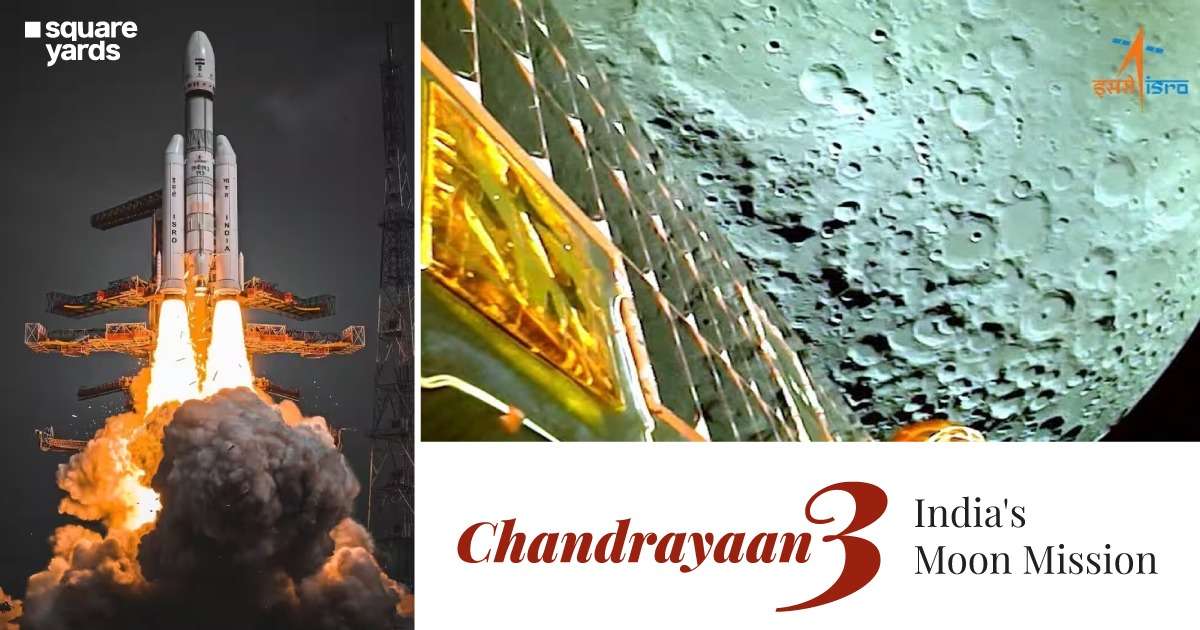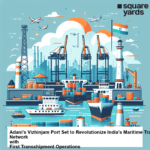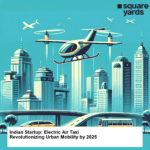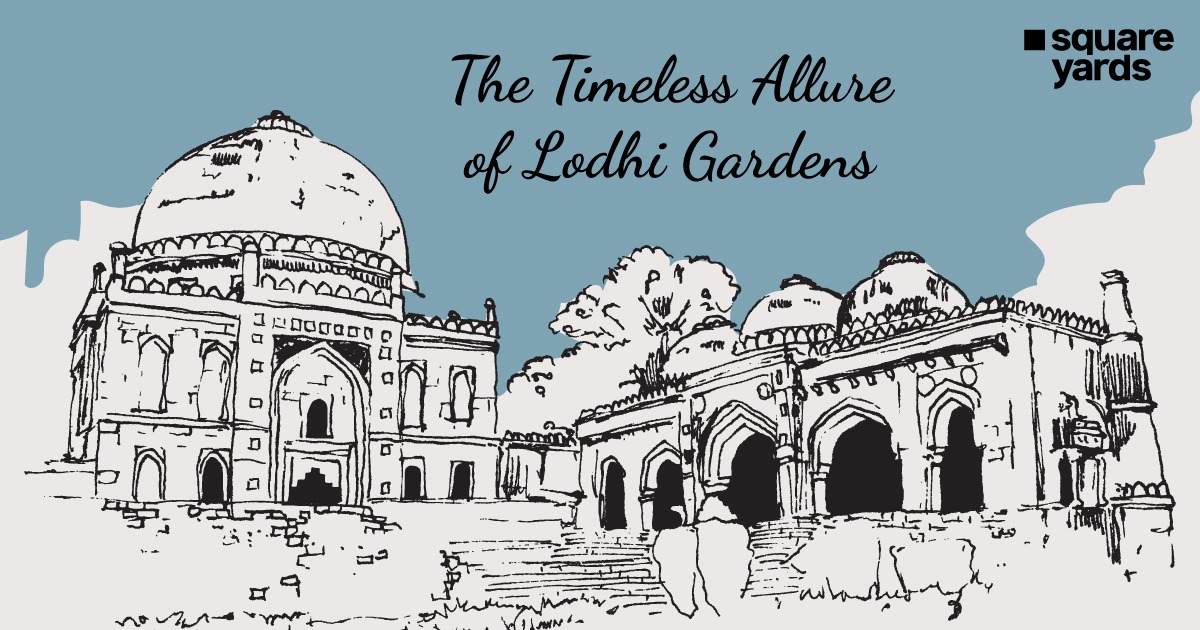India is once again on the verge of creating history. On 14th July, The Indian Space Research Organization (ISRO) launched Chandrayaan-3, from Sriharikota Space Centre with an orbiter, lander and a rover. On 5th August, the Chandrayaan-3 spacecraft was successfully manoeuvred into lunar’s orbit, and ISRO shared the first-ever images of the Moon as the orbiter took.
Tonight, At 11 PM, the Indian spacecraft will do its next manoeuvre. There will be three more manoeuvres performed by the Indian spacecraft until August 17, at which point the Landing Module Vikram, home to the rover Pragyan, will separate from the Propulsion Module. The lander will then perform de-orbiting manoeuvres before making its final powered fall into the moon, which is anticipated to occur on August 23 or 24.
Table of contents
Significance of Chandrayaan-3 for India
If all goes well according to the plan, the lander will make a safe touchdown on the lunar’s surface between August 23 and 24. If successful, India will be the fourth country to achieve a soft-landing on Moon’s unexplored south pole, following the United States, China, and the former Soviet Union.
Chandrayaan-3 is the Indian Space Research Organisation’s (ISRO) second attempt in a span of four years, after its previous lunar mission, Chandrayaan-1, in 2008. Unfortunately, Chandrayaan-2 encountered difficulties during its moon phase. Its lander, named ‘Vikram,’ had a hard landing on September 7, 2019, because of problems with its braking system.
How Chandrayan-3 is Different from its Antecedents?
The Chandrayaan-3 mission holds significance due to its distinct departure from its previous unsuccessful counterpart. Notably, the Propulsion Module now incorporates a payload known as SHAPE, which stands for Spectro-polarimetry of Habitable Planet Earth. This payload is designed to study Earth from a lunar orbit.
According to ISRO, SHAPE serves as an experimental instrument intended to investigate the spectro-polarimetric characteristics of Earth within the near-infrared wavelength spectrum
In addition to the SHAPE payload, the primary role of the Propulsion Module is to transport the Lander Module from the injection orbit provided by the launch vehicle until the moment of separation from the lander.
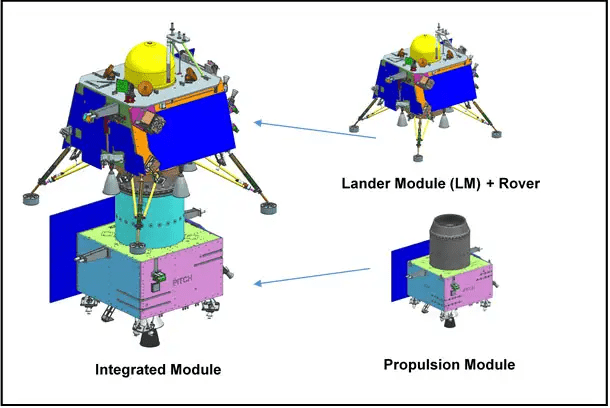
Source – www[dot]isro[dot]gov[dot]in
Upon reaching the lunar surface, the Lander Module carries several payloads, including RAMBHA-LP, dedicated to measuring the density of plasma ions and electrons in the vicinity of the lunar surface, along with their fluctuations. Another payload, known as ChaSTE (Chandra’s Surface Thermo Physical Experiment), focuses on conducting thermal property measurements of the lunar surface near its polar region. Additionally, ILSA (Instrument for Lunar Seismic Activity) is employed to assess seismic activity in the landing region and to reveal insights into the structure of the lunar crust and mantle.
The rover will emerge from the Lander Module following a gentle landing to explore the lunar surface utilizing its APXS (Alpha Particle X-Ray Spectrometer) payload.
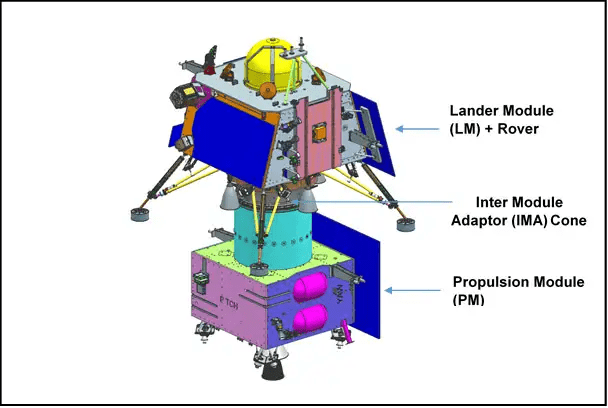
Source – www[dot]isro[dot]gov[dot]in
Main Objectives of Chandrayaan-3
Chandrayaan-3 aims to achieve a gentle and secure landing on the lunar’s unexplored southern surface. ISRO Scientist Tapan Mishra reveals, “Our rockets (launch vehicles) are not very powerful. Once the rockets escape the earth, they need a velocity of 11.2 km/s to progress. Since our launch vehicles don’t operate at such velocity, we resorted to the sling-slot mechanism”.
The rover’s mission involves gathering information about the moon’s composition and geological characteristics, contributing to scientists’ understanding of the past and development of our closest celestial companion. In addition to its main objective of a moon landing, Chandrayaan-3 will undertake scientific tests to explore the moon’s surroundings, encompassing its historical background, geological features, and resource prospects.
‘A Moment of Glory’ for India
The Indian LVM3 rocket possesses significantly lower power than the United States’ Saturn V. It took an elongated route around the earth, going around it five or six times to pick up speed before starting its month-long voyage to the moon.
After the successful landing, the rover will explore the neighbouring lunar region and capture images that will later be transmitted back to Earth for thorough analysis. The rover is intended to function for one lunar day, equal to 14 days on Earth.
Prime Minister Narendra Modi congratulated everyone and said, “scripted a new chapter in India’s space odyssey”.
Astronomer & professor Dr RC Kapoor says, “On 14th July, ISRO launched in space Chandrayaan-3 & since then we have been waiting with bated breath…Once lunar orbit insertion is successful, we will wait for 17th August by which the orbit will have been circularized. On 23rd August in the evening, we are expecting a touchdown. We hope this time it is going to be successful.”


